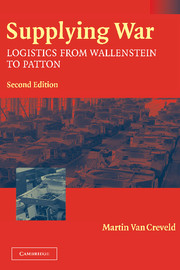Book contents
- Frontmatter
- Dedication
- Contents
- Maps
- Preface
- Introduction
- 1 The background of two centuries
- 2 'An army marches on its stomach!'
- 3 When demigods rode rails
- 4 The wheel that broke
- 5 Russian roulette
- 6 Sirte to Alamein
- 7 War of the accountants
- 8 Logistics in perspective
- Postscript: Where are we now?
- Note on sources
- Bibliography
- Notes
- Index
Postscript: Where are we now?
Published online by Cambridge University Press: 22 June 2023
- Frontmatter
- Dedication
- Contents
- Maps
- Preface
- Introduction
- 1 The background of two centuries
- 2 'An army marches on its stomach!'
- 3 When demigods rode rails
- 4 The wheel that broke
- 5 Russian roulette
- 6 Sirte to Alamein
- 7 War of the accountants
- 8 Logistics in perspective
- Postscript: Where are we now?
- Note on sources
- Bibliography
- Notes
- Index
Summary
Almost thirty years have passed since, living in London and working mainly at an old dressing table of my landlady who has long since passed away, I wrote Supplying War. Thirty years is a long time; while some things have remained more or less the same, others have changed beyond recognition. Against this background, the present postscript attempts to do three things. Part I asks what has happened to the history of military logistics as a field of study. Part II asks where Supplying War itself stands amidst the rapidly growing literature, including some that is critical of it. Part III takes a brief look at the post-1945 development of military logistics themselves. What has happened to them, and where are they headed?
To start, then, with what happened to logistics as a field of study. As even a cursory look at the catalogues will show, the most obvious change has been the amount of attention paid to the issue. Thirty years ago the literature on the history of military logistics was extremely limited; indeed almost the only group attracted by the subject were a few Austrian-Hungarian officers who, for some obscure reason, had done a considerable amount of work on it between about 1866 and 1914. Then as now, discussions of warfare tended to revolve around the marvels of ever more sophisticated weapons and weapon systems, a term that was just coming into vogue. Others wrote of armies that advanced and retreated, maneuvered and outflanked, encircled and penetrated; by contrast, logistics were not considered sexy. In part, this may have reflected the impact of the most influential twentieth-century military pundit, Basil Liddell Hart, whose work on strategy first saw the light of print in 1929 and continued to be published each time a major conventional war broke out anywhere in the world. Unfortunately he had died some years before I came to England so I did not have the privilege of meeting him. However, his legacy was intact and his light was marching on.
Information
- Type
- Chapter
- Information
- Supplying WarLogistics from Wallenstein to Patton, pp. 239 - 262Publisher: Cambridge University PressPrint publication year: 2004
